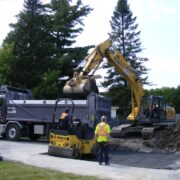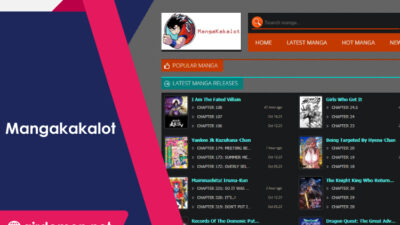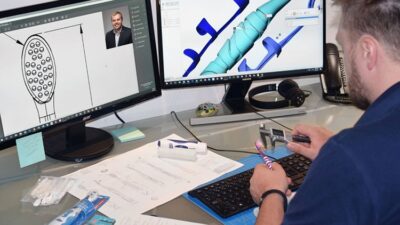Choosing the right laser for a marking application can be challenging due to the numerous types of lasers and materials involved. In order to make an optimal choice, it is critical to understand the laser characteristics and the properties of the material.
Table of Contents
Laser technologies
Since its introduction more than 25 years ago, the Nd:YAG laser has been the industry’s workhorse. It was originally lamp-pumped, but nowadays diode pumping is most common for these lasers. Systems based on diode technology are robust and have excellent mean time between failures (MTBF). Depending on the manufacturer, diodes have a life expectancy of more than 35,000 hours. Lasers using Nd:YAG have the advantage of having a smaller spot size due to their beam quality. Short pulses and small spot sizes combine to produce high peak power, which can be beneficial for deep engraving and printing with crisp, clear marks.
In addition to 1064 nm (red), 532 nm (green), and 355 nm (blue), the vanadate laser emits three wavelengths. These lasers offer pulse-to-pulse stability and are ideal for heat-affected zone (HAZ) marking and ablation marking. Vanadate lasers are used in automotive applications for day/night marking, which removes a top coating so that light backlights buttons during the night. Lower surfaces are typically exposed without damage.
Marking enthusiasts have been discussing fiber lasers almost every chance they get since they were introduced six years ago. Nd:YAG and vanadate lasers have higher beam quality, making fiber lasers less powerful. Because the fiber laser’s pulse width and spot size are larger, it can anneal stainless steel by putting more heat into the part and causing carbon to rise to the surface. The fiber laser is only being offered by a few fiber laser manufacturers to third parties for integration into marking systems.
The operating costs and consumables of these three laser technologies are nearly identical, which means that an end user does not need to make any cost trade-offs in choosing the optimum laser technologies. A solid-state laser’s output power degrades over time, but the system can be calibrated so that it retains the same power as when it was first installed. With this, the laser will remain at the same speed and quality as when it first arrived and was put into service. You can find more information at lasitlaser.es.
Applications
In laser marking, terms such as engraving, annealing, ablation, and color changing of plastics are commonly used. A laser marking process can be optimized by selecting a laser from the list of lasers discussed. The short pulses and pulse-to-pulse stability of a vanadate laser make it an excellent candidate for ablating day/night design components. Using this method, the top surface of a painted plastic base can be removed without damaging the pad-printed material underneath. Anodized aluminum is by far the most forgiving laser material, so ablation is often used to mark it.
Medical components such as implants and instruments are also commonly annealed using stainless steel and titanium. To achieve a dark mark that can withstand passivation and autoclave cycles, it is important to have a high concentration and longer pulse duration. A good engraving process depends on having the right parameters when it comes to frequency and speed so the material can be evaporated. For this application, short pulsed lasers with high peak powers are ideal.
Regardless of laser technology, industrial manufacturing will continue to use all three for years to come. Adapting to the changing demands of manufacturing will require technology to keep evolving. If you are considering laser markers, it is vital you work with a laser company that can demonstrate the advantages of each technology with regard to the material being marked. There are many companies that have application labs where materials can be tested using lasers that are fast, high-quality, and cost-effective. Learn more about different types of technologies being used to enhance the business revenue and its popularity on this website: www.govtechnews.com
















Comments